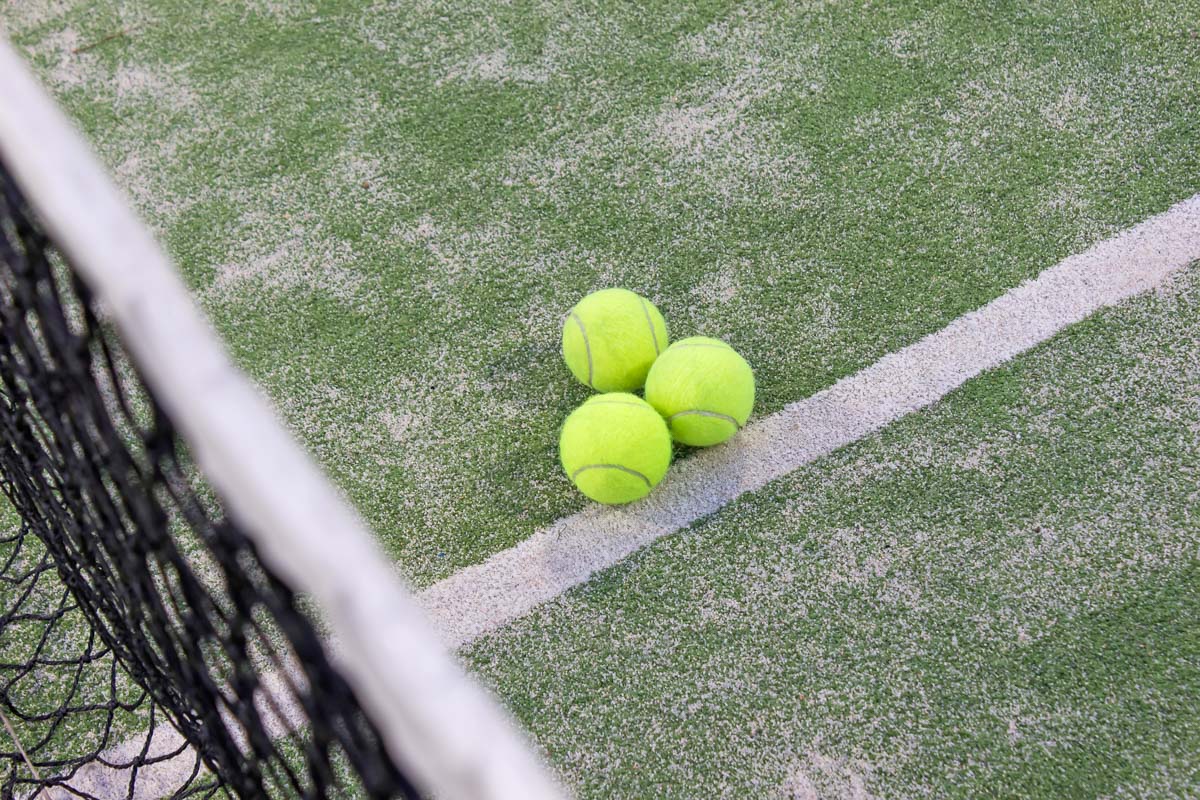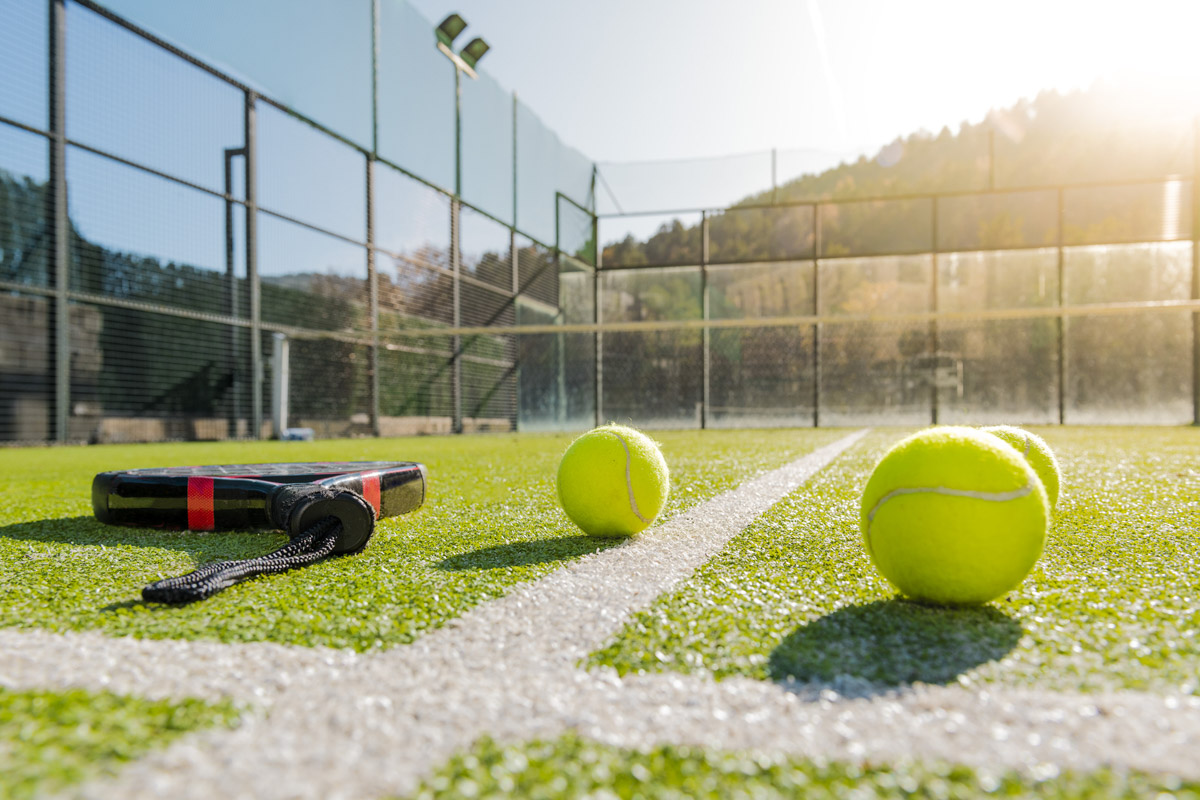Padel and tennis are two well-known racket sports, with a similar format and similar equipment.
To a new padel player, the two sports may not look much different at first glance, and indeed they have a lot in common.
In fact, the padel rules are even based on the rules of tennis, but they’re still two completely separate sports.
And that leads us to this million-dollar question: Is there a difference between a padel ball vs tennis ball?
The short answer is yes. But, despite the differences, it can be hard to tell them apart.
From a distance, even experienced players of both tennis and padel could find it hard to know if they are looking at a padel ball or a tennis ball!
Of all the things that the sports of padel and tennis have in common, the ball is the one that appears the most similar – but is in fact different.
So what exactly are the important differences between padel balls vs tennis balls?
We’ll cover everything you need to know in this article, so you’ll never have any trouble identifying whether a ball is a padel ball or tennis ball ever again!
Stay on the ball – don’t miss out
Join our mailing list to receive updates, discounts & more:
This post contains affiliate links, including Amazon Associates links, and we may receive a small commission if you use one. This is at no extra cost to you and allows this site to continue providing free padel resources.
Padel Balls vs Tennis Balls: Key Differences
When it comes to differentiating the balls used for popular racket sports like padel, pop tennis and (regular) tennis, it can be quite hard to spot the differences.
Of course, when you’re on the padel court, the differences between padel balls, tennis balls and pop tennis balls don’t really matter. You’ll (hopefully!) be playing with the right type of ball already.
However, you certainly want to make sure you’re buying the right type of ball when you next stock up!
While it’s easy to tell the difference between padel rackets and tennis rackets, the balls can be a little trickier.
That’s generally because padel balls are very similar to tennis balls in terms of physical appearance.
But when you consider other factors such as weight, size, material, bounce, and internal pressure, you’ll notice a significant difference.
If you’re ever not sure which type of ball you’re buying or using, you can use these differences to tell.
So, let’s take a look at how they differ!
Ball Size (diameter)
While padel balls and tennis balls look almost identical, they’re not actually the same size!
Padel balls are slightly smaller than tennis balls – something you may only notice if you’ve been playing either sport for a long enough period of time.
The size of a tennis ball must be between 6.54cm and 6.86cm.
On the other hand, a padel ball is between 6.35cm and 6.77cm in diameter.
That means that some padel balls and tennis balls can be the same size (if they fall between 6.54cm and 6.77cm in diameter). However, the range of sizes for padel balls is slightly smaller than that of tennis balls.
Ball Weight
Tennis balls have a weight of between 1.975 ounces (56g) and 2.095 ounces (59.4g). This is the required weight, as determined by the International Tennis Federation.
Padel balls also have a weight between 56g and 59.4g, making them exactly the same weight as a tennis ball.
Therefore, there is absolutely no difference between padel balls vs tennis balls when it comes to weight!
Of course, the rackets used for each sport are very different. Therefore, the way you hit the ball and the way it responds will differ, despite it being the same weight.
This is something that tennis players sometimes struggle with when they begin playing padel.
It’s not uncommon for tennis players to exert too much power on the ball, causing it to hit the glass wall of the opposing team (and therefore being called out!).
Material
A tennis ball is usually made up of rubber as its core, while the exterior is covered with felt.
Rubber is the material used to construct the core of the ball, treat it as its mould, and give the ball its spherical shape.
Felt is the material used to cover the entirety of the ball. The type of felt used may differ between natural or synthetic fibres.
This is also true for padel balls – and why they look exactly the same at first glance!
It probably won’t come as any surprise that padel balls are usually manufactured by the same brands as tennis balls, in the same facilities.

Rebound
When it comes to padel balls vs tennis balls, one thing that is different between the two will only be noticeable when you start playing.
Yes, we’re talking about rebound!
The rebound, or bounce, of a padel ball is ever so slightly less than that of a tennis ball.
Tennis balls can usually bounce between 135 centimetres (53 inches) and 147 centimetres (58 inches).
Once again, this is regulated by ITF, whose regulations determine that the ball must have this amount of rebound. For Type 1 (fast) balls, this extends to 135-151cm (53-60 inches).
Padel balls, on the other hand, do not need to offer quite so much rebound.
Instead, they are required to only bounce between a height of 135 centimetres and 145 centimetres.
Given that they are the same weight, you may now be wondering, “What makes a tennis ball have more bounce than a padel ball?”
That’s where internal pressure comes into play…
Internal pressure
Internal pressure is the most important difference between a padel ball vs tennis ball.
The pressure refers to the pressure when buying new, and this will decline over time and with usage.
Therefore, it’s important to replace your padel balls when it’s needed!
Pressurized tennis balls have an internal pressure of 14psi, once again in line with the regulations set out by the ITF.
Padel balls are less pressurised than tennis balls, with a required pressure of between 10psi and 11psi. This is the required range, and almost all new padel balls with have a pressure of 11psi.
The greater pressure of tennis balls is what gives them a greater rebound – something that is needed due to the larger playing area.
Padel Ball vs Tennis Ball: Quick Comparison
If all the above information is making your head spin more than a padel ball, here is an easy summary of the similarities and differences between a padel ball vs tennis ball:
| Padel Ball | Tennis Ball | |
| Diameter | 6.35 – 6.77 cm | 6.54 – 6.86 cm |
| Weight | 56 – 59.4 grams | 56 – 59.4 grams |
| Material | Rubber & Felt | Rubber & Felt |
| Bounce | 135 – 145 cm | 135 – 147 cm |
| Pressure | 14 psi | 10 psi – 11 psi |
FAQs about using a padel ball vs tennis ball
Still got questions about padel balls and tennis balls?
Don’t worry – we’ve answered the most common ones right here.
Can you use tennis balls for padel?
No, you can’t use a tennis ball for padel.
Or, rather, you shouldn’t use a tennis ball for playing padel.
Even though the weight and material can be exactly the same, the internal pressure is what makes all the difference.
Not only will it be harder to play padel with a tennis ball – which is why there are specific padel balls available! – but doing so could put your equipment at risk.
Due to the higher pressure of a tennis ball, your padel racket will take much more of a beating every time it hits a tennis ball.
After all, balls are made to adapt to a certain sport, and therefore a tennis ball simply isn’t designed for padel.
Aside from that, tennis balls bounce way more than padel balls, so this disrupts how a padel match should be.
Returns would be much easier if tennis balls were used in padel, but that would remove half the fun!

Are paddle balls the same as padel balls?
No, paddle tennis balls aren’t the same as padel balls.
Paddle tennis – or pop tennis, as it was renamed in 2015 – used exactly the same type of ball as tennis.
Therefore, since padel balls and tennis balls aren’t quite the same, pop tennis ball and padel balls are also different in several ways.
Why do tennis balls bounce higher than padel balls?
Tennis balls bounce higher than padel balls since they naturally have higher internal pressure.
This means that the compressed air inside tennis balls is far greater than that of padel balls, which in turn, grants them the ability to bounce more.
If you use ever try to use tennis balls for padel, expect to see some damage on your padel bat or racket due to the ball’s hardness!

